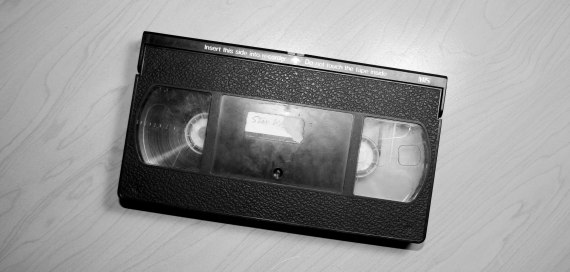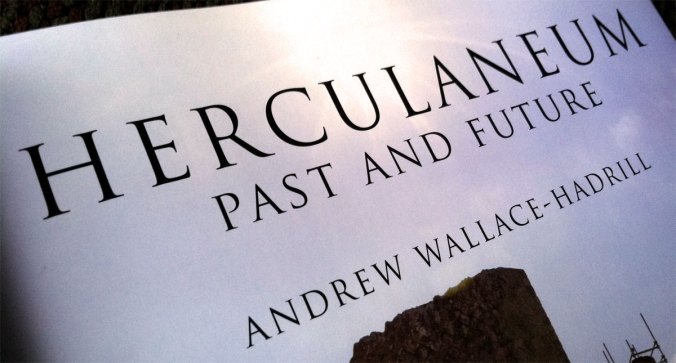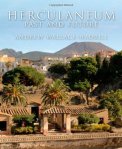Sometimes, archaeology happens when you least expect it.
A few months ago I was digging through some boxes in my basement when I discovered an artifact from my childhood. That artifact was a VHS tape; a bootleg copy of Star Wars. Not Star Wars: A New Hope, STAR WARS, full stop (collector’s will note how incredibly rare this version is). The tape was marked only by a small piece of aged masking tape with the title scrawled in pencil.
I picked up the tape, forgetting how weighty older technology can sometimes be. For a split second, I considered tossing it in the garbage. The tape is an obsolete piece of technology. I don’t even own a VCR anymore, so what was the point in keeping it around? But, as my hand hovered over the rubbish bin, I found myself hesitating. I couldn’t let go, couldn’t part with it; I couldn’t bear to know that it no longer “existed”.
I found myself questioning my own actions. Why did this rectangular plastic contraption matter? I carried the tape back to my desk where it would sit beside an anthology of other cherished mementos for several weeks as I contemplated this question.

At first the cassette was a nuisance and constantly in my way. I found myself shuffling it from place to place on my desk. Next, it became a paper weight and on one particular occasion a coaster. Eventually, I moved it to the outside perimeter of the desk; sandwiched in between an early 1900’s cobalt eyewash bottle and an Iroquois projectile point. That’s when it clicked.
I, the archaeologist, had failed to treat this object as exactly what it was: an artifact. It may not have been as old as some of the other trinkets I’ve encountered, but the fact was that it fit the criteria: it had been created by human hands to serve a specific function, it had been utilized until it was no longer necessary, and then subsequently retired to the modern day midden (also known as the great American basement). That’s when this whole article began to take shape.
But, before I go any further, a bit of a history lesson:
I was born in 1981, when the VHS format was migrating from exclusivity into commonality. Learning how to operate the VCR was one of the first technical skills I ever acquired as a child. Insert tape, press play, commence a 120 minutes of fun. The 7⅜” × 4″ × 1″ black plastic artifacts originated before my time. First introduced in the 1970s by JVC, VHS revolutionized the film industry by placing cinematic releases into the hands of the audience like never before. The format’s introduction would allow for distribution on an affordable and ultimately unprecedented scale.
VHS didn’t go unchallenged. It fought battles from the very start; first against Betamax and later Laserdisc. On the consumer level, VHS won both campaigns. But with the introduction of DVDs in 1996, VHS began its slow slide into a six foot hole.
In the 00s, VHS officially died, replaced by palm sized reflective plates and ethereal torrents of data. On December 31, 2008, the last major United States supplier of pre-recorded VHS tapes, Distribution Video Audio Inc., shipped its final truckload and subsequently ended the format.
It took nearly thirty years for VHS to reach extinction. As technology continues to evolve, I find it highly improbable that outside of digital content, we will ever see a format with such a resilient legacy and durable cultural following. As contemporary times slip into history, VHS tapes will begin their migration in to landfills and middens around the world. These tapes will be turning up at future archaeological sites for centuries to come. They will be an insight into people’s lives through the stories trapped on their celluloid interior. They are, for all intents and purposes, new age cave paintings.
As I mulled this over, I began wondered: what would my own tape say about me?
I’ll start with my previous statement, the one about new age cave paintings. Imprinted on the celluloid roll encased within the plastic walls of the cassette lies a visual narrative. All stories have versions. My version is unique. Its provenance harks back to a time before the story of Star Wars was even complete. It exists before ROTJ (that’s Return of the Jedi for the unfamiliar), before the first trilogy collection, the second, the third, the laserdisc, the Special Edition, the prequels, the Ultimate Editions, the DVDS and the Blu-ray. It’s a version free from rethinks and copious digital edits. It represents a version of a story that has been unmodified, like a campfire tale unsullied by the retellings of time. In archaeology, information like this contains value. Oral histories are one powerful method for interpreting history. Will people a hundred years from now be interested in the subtle variations of this legend? Will knowing that Han not only shot first, but that Greedo never even pulled the trigger, provide insight into our culture? That’s for future generations to determine.
Like most buried artifacts, this tape has received its fair share of weathering and erosion. Perhaps just as destructive as the harsh elements of the outdoors are the repeated viewing habits of a young child or the destructive power of a cold, damp basement in New York where the tape has resided for untold years. Time and circumstance have pressed themselves upon the celluloid interior and the once white gown of Princess Leia is now flaxen. Tracking lines burst across the screen like surprise Hothan snowstorms. The audio dips in and out. I recall one of my graduate studies professors asserting that the mode in which we experience something is just as important as the experience itself. Seeing an Egyptian sarcophagus brightly lit behind glass in the British Museum is one thing, but seeing it within a torch lit chamber in the Valley of the Kings, thick with two thousand years of dust, is a completely different experience. The same can be said about my tape. Time has not been kind to my bootleg. But the tracking lines, poor audio quality, mono soundtrack, and playback speed are all characteristics of my experience. These factors defined what I heard and saw and contributed, whether or not I knew it, to my exposure.
Digging deeper, I began to see that this artifact represented a specific time in not only my own life, but in the life of an entire culture. Star Wars is a film that through its immense popularity and universal appeal has spread like wildfire around the globe. In a way, the film has become a standard in both cinema and sci-fi. With such a broad reputation I think it is safe to say the tape represents a form of exposure to a story in which a vast majority of the world is familiar. So, in one respect, my copy of Star Wars represents a waypoint in my journey through pop-culture. For decades, authors like Stevenson, Kipling, and Anderson fueled young imaginations at bed time. This decade it’s more often than not Spielberg, Lucas, and Rowling providing the ground work for dreams and imaginations. Through hundreds of viewings Star Wars shaped my character and drove my imagination.
Lastly, I suppose the tape survives as a byproduct of my nostalgic nature. My first copy of Star Wars. How many people, thirty-something years on, can say they own the first copy of Star Wars they ever watched? Its survival is a testament to what I hold sacred; what was important to me in my upbringing. To me, that achievement has value. And since the format is now extinct, that personal accomplishment may be the only lasting value that remains.
What is archaeology if not finding value in obsolete things? Over the course of human life artifacts are created, they are utilized, discarded, and often forgotten. Our job as archaeologists is to take these forgotten artifacts and learn what we can from them, not just measurements and materials, but understand what they meant to both individual people and culture as a whole. This is as true for a sharpened piece of antler as it for a clay fertility statue or a thirty year old VHS cassette. Everything has meaning, everything has value. Understanding what exactly those two concepts are may very well be the biggest mystery.










You must be logged in to post a comment.